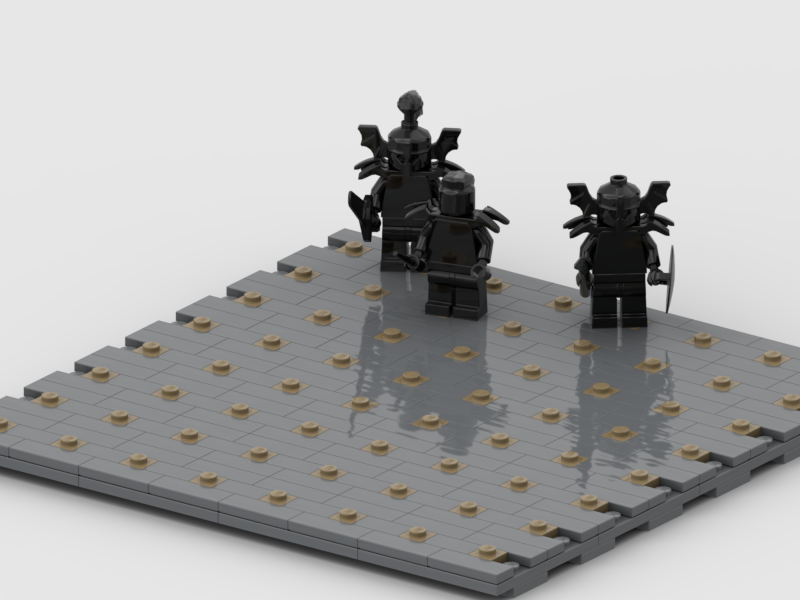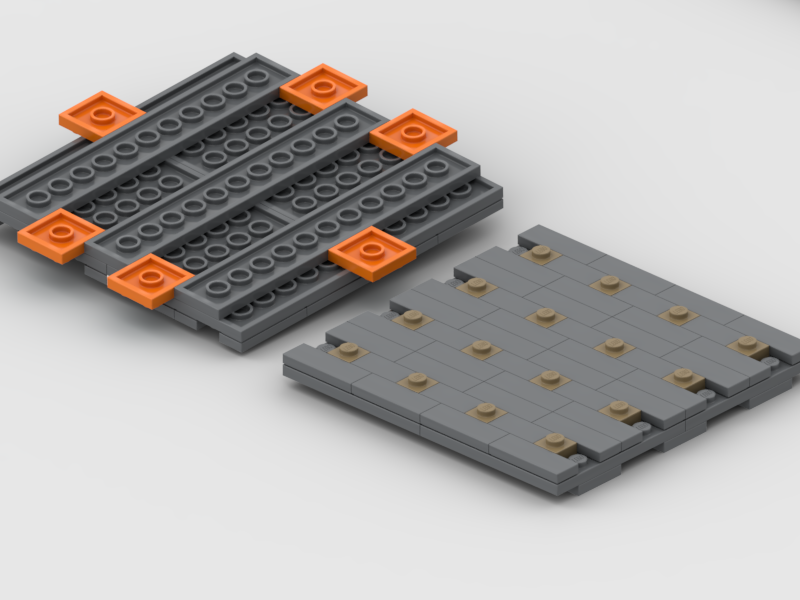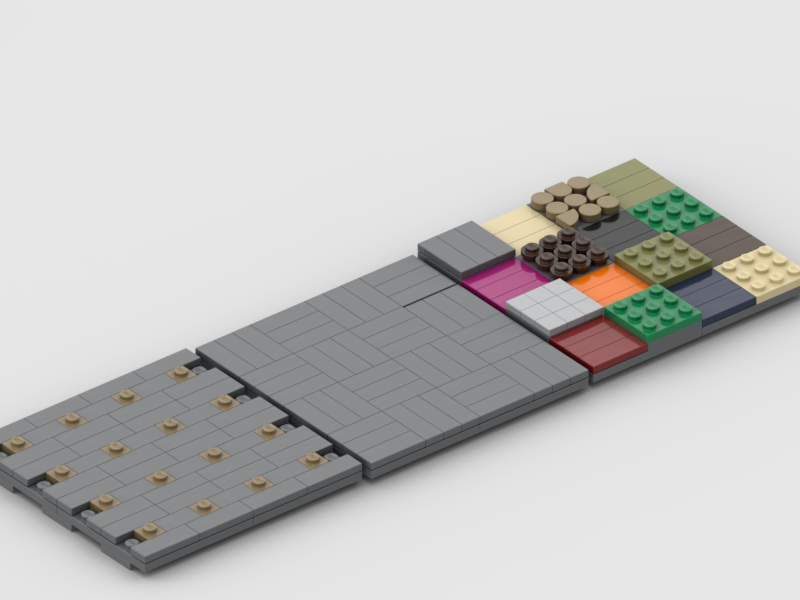Introducing the 24x24 stud MITs Gaming Board

Exploring the 1" Square Map Concept with MITs
The most contentious issue with using Lego as a basis for tabletop gaming, is whether or not it's acceptable to deviate from the 1" grid square standard. As it happens, 3x3 stud squares = 1 inch. I discussed previously, how maps based around 3x3 inch squares are not as easy to produce as maps based around 4x4 stud squares. I still believe this is the case. That said, I'm coming around to the idea of modular maps based around 3x3 stud squares - and it's actually pretty neat!
Using 6x6 stud plates as the basis of the map, I've assembled them in groups of four. Instead of using technic bricks to connect the modular pieces together, I've created a ridged system under the plates using 2x12 stud plates as supports (any type of plate can be used). The groove left by the ridges provides guidelines for connecting plates together using 2x2 square plates or whatever is preferred. This is a very flexible modular system that is not strictly reliant on technic placement. Using this method, almost any plate that is 2 studs wide can be used as a connector!

Another interesting facet of these squares is the studs (if you choose to use the version in the banner image) line up using math that is divisible by four. What I mean by this, is that the same 4x4 or 16x16 structures that are built to go on top of the MITs boards used in the MITs boards based around 4x4 stud grid squares can be used in MITs boards based around 3x3 stud grid squares. Neat!
As for the grid, there are options. This interlocking alternating pattern used primarily in this example works well if anchor points for minifigs is important. If having studs to connect to is not important, then an alternating 1x3 tile pattern is possible and quite frankly, looks really cool! And then there's option #3 - use a ruler! Make your terrain as you want. Since the movement has been scaled down to 1" grid squares, it becomes possible now to use a ruler to move a character about rather than relying on counting squares. So go wild!

Now, let's talk about cost. The cost of doing 3x3 vs. 4x4 stud grid squares seems to be about the same. At first, I thought the 32x32 boards would end up being more expensive simply because they use more plastic. However, despite using less plastic, the 24x24 MITs gaming boards end up being on par with 32x32 MITs gaming boards. This is probably due to the popularity of parts more so than the measure of plastic in use.
24x24 MITs gaming board on Bricklink

32x32 MITs gaming board on Bricklink

I've tried several combinations and they all end up being roughly the same, give or take a dollar or so. With that in mind, live your best life. Follow whichever path you choose. There will certainly be some variations that are more expensive than the other due to part selection but on the whole, it seems that they are roughly the same.
For me personally, I prefer the 4x4 stud squares as the base for my grids. Plus, I've invested heavily into 2x2 jumper tiles (cries in plastic). I do feel like there's some really cool sets and maps that can be made with these 3x3 stud squares and I hope someone out there puts some examples together to show off.